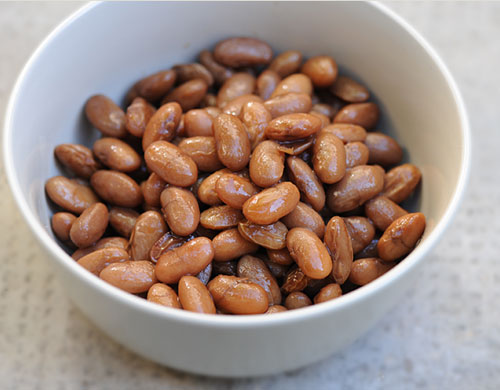
Nimame (煮豆 にまめ), or stewed beans, are a standby item for bentos. They are usually rather sweet, though not dessert-level sweet, and serve the purpose of a hashi yasume or "chopstick rest" (see anatomy of a Japanese meal), a little something that contrasts in flavor and texture from the rest of the bento.
While it takes rather long to cook these, like most bean dishes, this is a terrific staple item. The beans keep for at least a week in the refrigerator, and freeze well in small batches too. Tuck in a spoonful in any bento for something a little sweet, a little salty, and good for you.
You can make nimame with any kind of dried beans, but here I've specified white or navy beans, or haricot beans, which are widely available and inexpensive. You could use cannellini beans instead.
You'll notice that the only remotely exotic ingredient used here is soy sauce, so anyone can make this! Yes it's still authentically Japanese. (It's another one of my mom's recipes.)